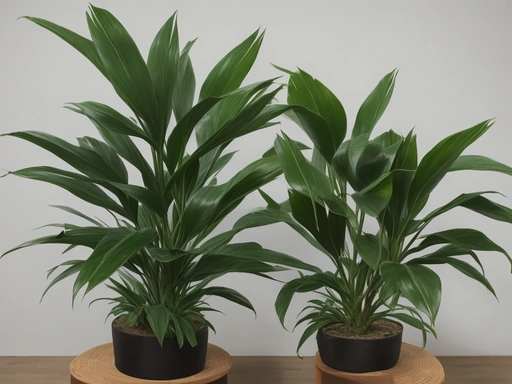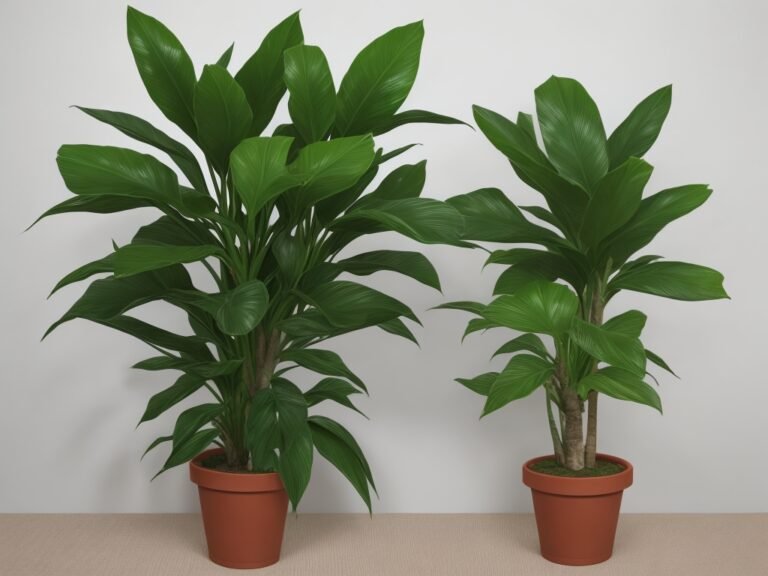Dracaena Compacta Problems And Solutions: Troubleshooting Made Easy
Key Takeaways:
- Overwatering is a common issue with Dracaena Compacta, causing root rot and yellowing leaves.
- Proper sunlight exposure is crucial for the health of Dracaena Compacta, as too much or too little light can lead to growth problems.
- Pests such as spider mites and mealybugs can infest Dracaena Compacta, requiring regular inspection and treatment.
- Regular pruning is necessary to maintain the compact shape and promote healthy growth of Dracaena Compacta.
Have you ever noticed your Dracaena Compacta looking a bit droopy or yellowing? Well, you’re not alone.
These beautiful and popular houseplants can sometimes encounter a few problems along the way.
But fear not! As an experienced plant lover, I’ve encountered my fair share of Dracaena Compacta issues and found effective solutions to address them. In this blog article, we’ll explore common problems like lack of sunlight, overwatering, underwatering, and pests and diseases.
I’ll also provide you with practical tips and solutions to keep your Dracaena Compacta thriving.
So, let’s dive in and solve those pesky plant problems together!
Common Problems with Dracaena Compacta
Dracaena Compacta can face issues with lack of sunlight, overwatering, underwatering, pests, and diseases.
Lack of Sunlight
Lack of sunlight can be a problem for Dracaena Compacta.
It needs bright, indirect light to thrive.
If it doesn’t get enough light, its growth may slow down, leaves may lose their color, and the plant may become weak.
Place it near a window or use artificial grow lights to provide adequate light.
Overwatering
Overwatering is a common problem for Dracaena Compacta. It can lead to root rot and other issues.
To prevent overwatering, make sure the soil is dry before watering again.
Check the moisture level by sticking your finger into the soil. Also, ensure the pot has good drainage to allow excess water to escape.
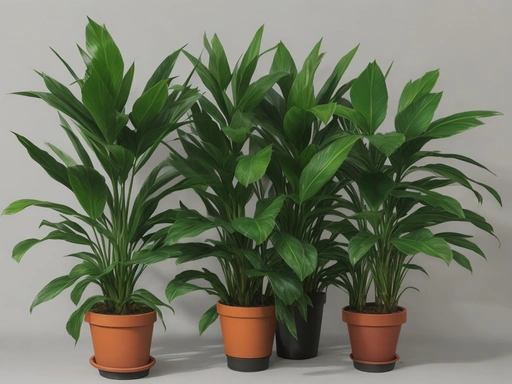
Underwatering
Underwatering is when your Dracaena Compacta doesn’t receive enough water.
Signs include dry soil, drooping leaves, and yellowing or browning of the foliage.
To address this issue, make sure to water your plant thoroughly whenever the top inch of soil feels dry.
Additionally, provide adequate humidity to prevent further drying out.
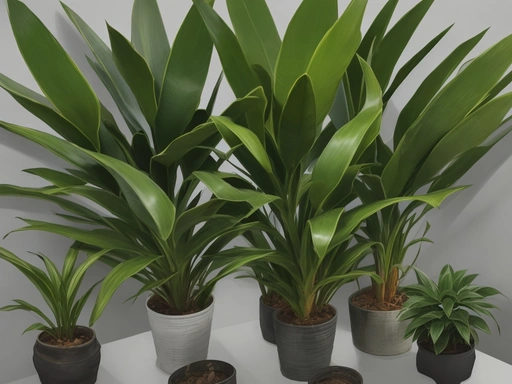
Pests and Diseases
Pests and diseases can be common issues for Dracaena Compacta.
Some pests to watch out for are spider mites, mealybugs, and scale insects.
Diseases like root rot and leaf spot can also affect your plant.
Regularly inspect your plant for any signs of pests or diseases, and take appropriate action to treat and prevent them.
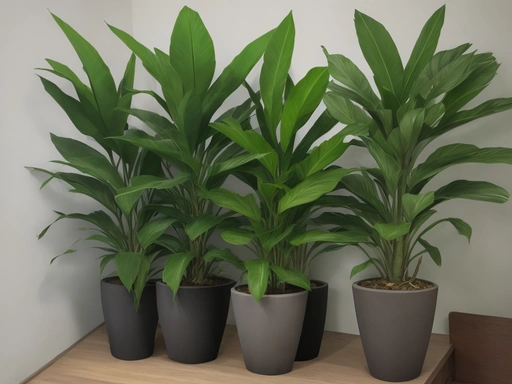
Solutions for Dracaena Compacta Problems
To address problems with your Dracaena Compacta plant, consider providing adequate sunlight, adjusting the watering routine, and addressing any pests or diseases.
Providing Adequate Sunlight
Dracaena Compacta requires bright, indirect sunlight to thrive. Place it near a window where it can receive filtered light.
Avoid direct sunlight as it can scorch the leaves.
If you have limited sunlight in your space, consider using artificial grow lights to supplement the light needs of the plant.
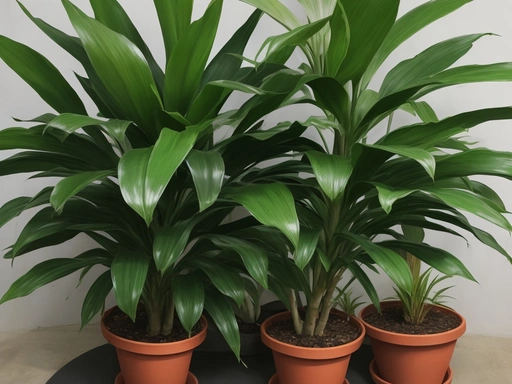
Adjusting Watering Routine
To adjust your watering routine for Dracaena Compacta, start by checking the moisture level of the soil.
Stick your finger about an inch deep into the soil and if it feels dry, it’s time to water.
Be sure not to overwater as this can lead to root rot.
Water thoroughly, allowing excess water to drain out.
Adjust the frequency of watering based on the moisture level of the soil, keeping in mind that these plants prefer slightly dry conditions.
Dealing with Pests and Diseases
Dealing with pests and diseases in your Dracaena Compacta can be a bit challenging, but there are effective methods to address these issues. Here are a few tips:
- Identify the problem: Observe your plant closely and look for any signs of pests or diseases. Common pests include spider mites, mealybugs, and scale insects, while diseases like root rot can also occur.
- Isolate affected plants: If you notice any signs of pests or diseases, it’s important to isolate the affected plant(s to prevent the problem from spreading to other plants.
- Natural remedies: There are several natural remedies you can try to control pests. For example, you can use a mixture of water and mild soap to remove small insects like spider mites and mealybugs. Neem oil is also effective against various pests.
- Chemical treatments: In some cases, chemical treatments may be necessary to eliminate stubborn pests. Be sure to read and follow the instructions on the product label carefully, and use pesticides sparingly and as a last resort.
- Proper plant hygiene: To prevent pests and diseases, it’s essential to maintain good plant hygiene. Remove any dead leaves or debris from the plant and its surroundings, as these can attract pests and harbor diseases.
- Regular inspections: Regularly inspect your Dracaena Compacta for any signs of pests or diseases. By catching the problem early on, you can address it more effectively and prevent it from spreading.
Remember, prevention is key when it comes to pests and diseases. Providing your plant with proper care, including adequate sunlight, appropriate watering, and good air circulation, will help keep it healthy and reduce the likelihood of pest or disease issues.
Frequently Asked Questions
How often should I water my Dracaena Compacta?
Water your Dracaena Compacta when the top inch of soil feels dry. Stick your finger in the soil to check.
Ensure you don’t overwater, as it can lead to root rot.
Allow the soil to dry between waterings, but don’t let it completely dry out.
How do I prevent pests and diseases in my Dracaena Compacta?
To prevent pests and diseases in your Dracaena Compacta, there are a few simple steps you can take.
First, regularly inspect your plant for any signs of pests such as mealybugs or spider mites.
If you spot any, treat them promptly with organic insecticidal soap.
Secondly, avoid overwatering your Dracaena Compacta, as this can lead to root rot and other fungal diseases.
Make sure the soil is well-draining and only water when the top inch feels dry.
Lastly, keep your plant in a location with adequate air circulation and avoid placing it near other sickly plants.
This will help prevent the spread of diseases.
Can Dracaena Compacta tolerate low light conditions?
Dracaena Compacta can tolerate low light conditions, making it a good choice for indoor spaces with limited sunlight.
However, it is important to note that it still needs some indirect light to thrive.
Placing it near a window or using artificial grow lights can help provide the necessary light it needs.
Remember, it’s always best to find a balance between too little and too much light for optimal growth.
Final Verdict
Dracaena Compacta is a popular indoor plant that can thrive with proper care and attention.
Common problems with this plant include lack of sunlight, overwatering, underwatering, and pests/diseases.
To overcome these issues, it is important to provide adequate sunlight, adjust the watering routine, and deal with pests and diseases promptly.
By following these solutions, you can ensure the health and vitality of your Dracaena Compacta and enjoy its beauty in your home or office.
Remember to water appropriately, provide sufficient sunlight, and keep an eye out for any signs of pests or diseases.

